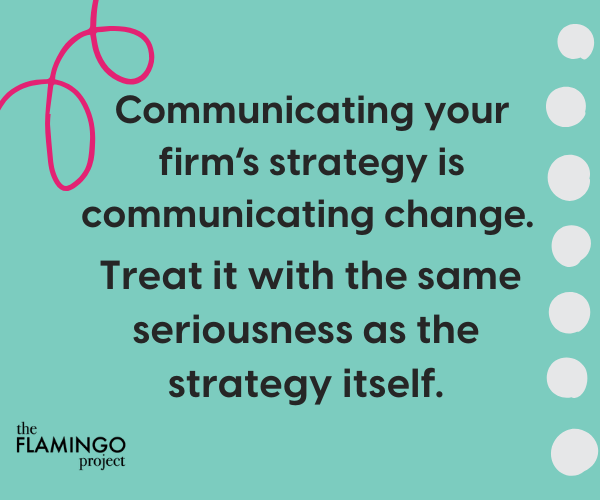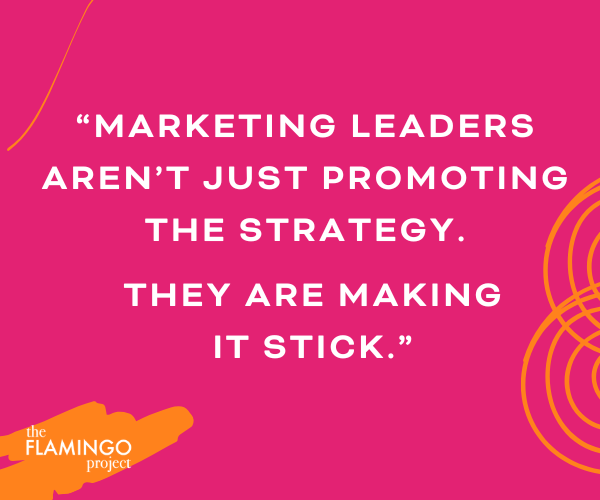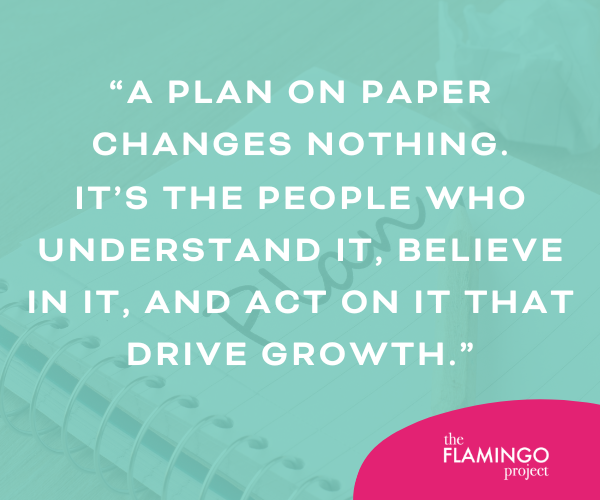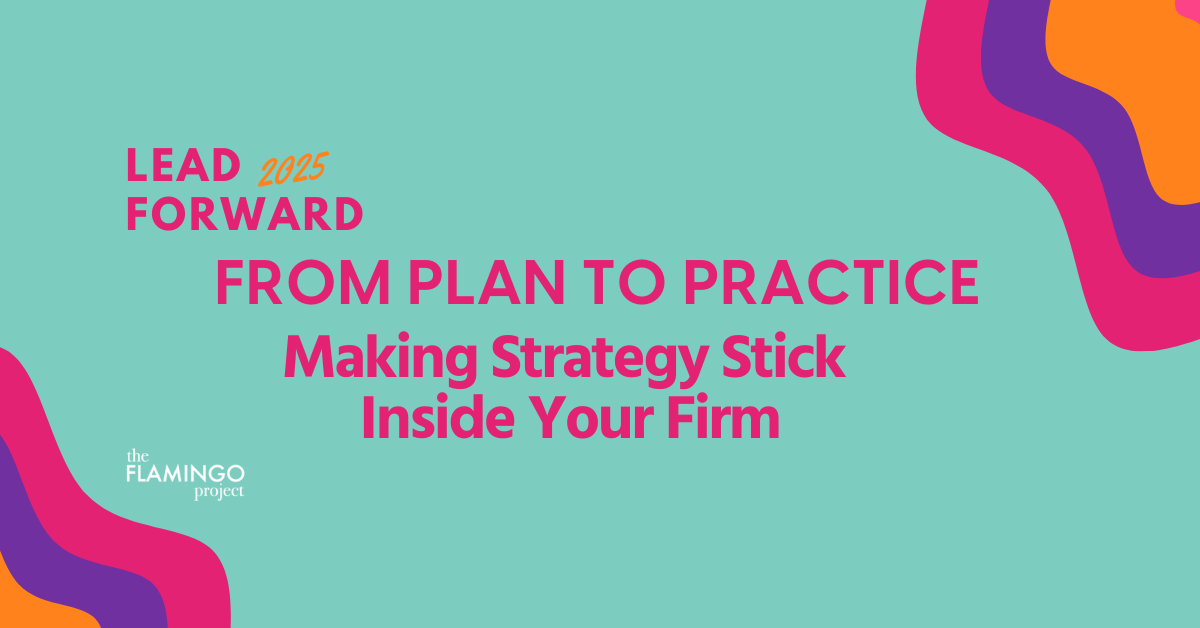Every January, firms roll out fresh strategies with fanfare. The PowerPoint decks are polished, the goals are inspiring, and leadership beams with optimism.
By mid-year, reality sets in. Competing priorities creep in, teams lose focus, and the strategy becomes something “leadership talks about” instead of something everyone lives.
For marketing leaders—CMOs, VPs, and marketing managers—this is familiar territory. You are often tasked, officially or unofficially, with keeping the strategy alive. That means crafting the messages, getting people aligned, and finding ways to turn vision into daily action.
Here’s the truth: making a strategy stick is change management. Effective change management requires intentional communication, consistent engagement, and—this is the point that often gets missed—a dedicated budget.
Why strategic plans fail at making strategy stick

In our LeadForward conversations with AEC marketing leaders, we heard the same frustrations repeated:
- Underestimating the Communication Effort: Too often, the plan rollout is treated like a one-time event instead of an ongoing conversation.
- No Budget to Support the Internal Rollout: Firms fund the planning process but not the work of embedding it into the culture. That means no resources for branded materials, manager toolkits, or engagement campaigns.
- Trickle-Down Communication Gaps: Leaders assume managers will cascade information naturally, but without training, tools, and accountability, the message gets diluted or disappears entirely.
- No “Single Source of Truth”: Employees waste time chasing updates across multiple channels. One participant joked about holding up a sign at their state-of-the-company meeting that reads, “It’s on the portal!” Funny, but also telling.
- Lack of Feedback Loops: Without regular input from across the firm, the strategy risks being seen as disconnected from daily work.
Strategy isn’t a one-time announcement. It’s an ongoing conversation.
Making strategy stick through change management
If you want a plan to stick, treat the rollout with the same seriousness as the plan itself.
For marketing leaders, that means:
- Build Internal Buy-In Early: Involve people at different levels in shaping the story, not just receiving it.
- Allocate Budget for Internal Communication: This is the single biggest lever most firms overlook. You need funds for branding the plan, producing manager toolkits, hosting Q&As, and creating ongoing content. Without it, you are relying on goodwill and spare time.
- Equip Managers as Change Leaders: Give them talking points, stories, and exercises that help translate the firm’s plan into local action for their teams.
- Segment Your Internal Audiences: Borrow from your external marketing playbook. Tailor messaging for remote staff, in-office teams, field staff, and senior leadership. Internal personas work just as well here as they do for clients.
- Make It Ongoing: Create a 12-month communication calendar. Share milestones, celebrate small wins, and spotlight teams living the strategy in their day-to-day work.

Practical moves to keep strategy alive
Here are some simple, high-impact moves our LeadForward group has seen work:
- Brand the Plan: Give your strategy a name, a visual identity, and a clear connection to your firm’s brand.
- Create a Single Source of Truth: Whether it is an intranet, a portal, or a shared workspace, make it easy to find and hard to miss.
- Pulse Surveys and Quick Feedback: Monitor the strategy, understand, and identify areas of confusion.
- Storytelling from the Field: Share examples of teams applying the strategy in real projects.
- Manager Huddles: Monthly touchpoints for managers to share progress, troubleshoot, and refresh messaging.

The payoff of making strategy stick

When you treat strategy rollout as change management—backed by a plan, a budget, and a sustained effort—you get:
- A strategy that is understood, embraced, and acted on across the firm.
- Leadership that sees marketing not just as a promoter of the brand, but as a driver of culture and change.
- A stronger foundation for year-over-year growth, because strategic plans only work when they are lived daily.
As you think about next year’s goals, plan for the rollout as carefully as you plan the strategy itself. Give it the budget, tools, and attention it deserves.
A plan on paper changes nothing.
It is the people who understand it, believe in it, and act on it that drive growth.
You don’t have to plan alone.
See how our Fall Planning resources support AEC leaders with research, strategy tools, and guidance for the busy planning season.
Connect with Sarah!
Have questions about making strategy stick in your firm? Sarah would love to hear from you. You can reach out to her directly or connect through our Contact page to start the conversation.
Don’t miss future insights, register for our newsletter and stay up to date.

